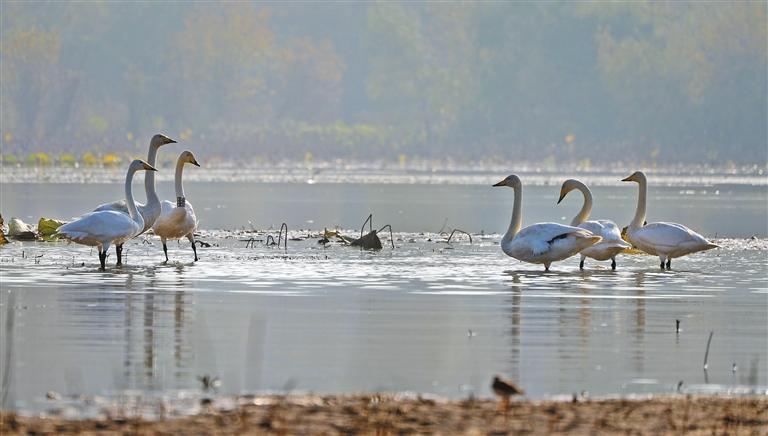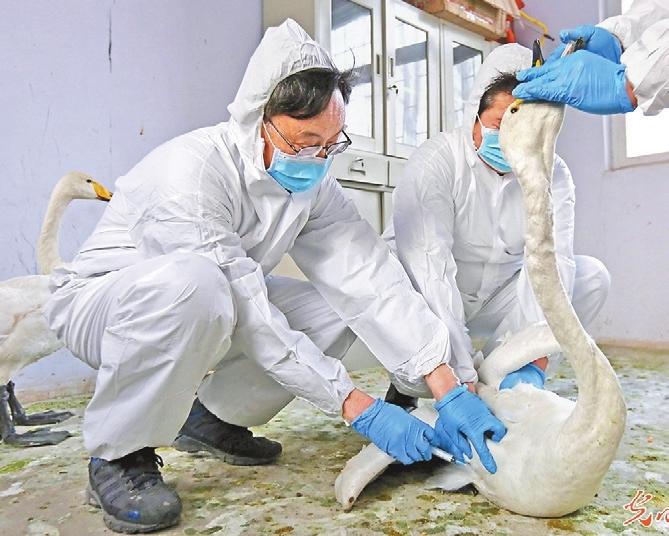

FOR 60-year-old Gao Ruyi, the proudest achievement in his life is not measured in accolades or riches but by the over 1,000 swans he has rescued. Gao, the former director of the wildlife rescue station in Sanmenxia, Henan Province, has guarded swans and the ecosystems they inhabit for almost four decades. His efforts have earned him the nickname “Swan Dad.” Gao grew up near the Yellow River, China’s second-longest river. He graduated in 1983 with a veterinary medicine degree and later worked at a zoo in Sanmenxia. He had little connection to swans until one day in the winter of 1988. On that day, the serenity of the riverside was disrupted by gunshots. Rushing to the scene, he found that someone had opened fire on the swans. The heart-wrenching cries of four wounded swans left him sleepless for days. “They lay mutilated on the ground. We saved two of them, but the other two succumbed to severe injuries that very night,” he said. Since then, Gao has become a guardian of swans and a witness to protection efforts along the Yellow River. The endeavor is not without its challenges, such as poor public awareness of wildlife protection and environmental pollution. Gao started working at a wildlife rescue station in the Yellow River wetland in Sanmenxia in 1994. Despite their efforts, illegal poaching persisted. One tragedy happened in 1998. Several wild ducks and swans were poisoned. Gao immediately called the police and provided treatment for the feathery victims. “Swans have memories,” he said. “Since the incident, nobody has seen swans in the area for many years.” He and his colleagues often visited nearby villages to educate residents about wildlife conservation, and encouraged them to bring sick or injured wild animals to the rescue station. In October 2009, a swan patrol team was formed. Gao and his team started 24/7 shifts to protect swans from potential distress or harm. Now, more people are becoming swan guards, Gao said. “They rescue and treat injured swans, spread knowledge about swan conservation, and foster harmonious coexistence between humans and swans.” Another challenge for the birds came from the environment. Swan populations in Sanmenxia decreased in the 1990s due to severe pollution caused by mining and industrial development, said Gao. Statistics indicate that in the late 1990s, pollution intensified in the Yellow River. About 40% of the river’s mainstream had “extremely poor” water quality. One-third of the original 16 aquatic species in the river became extinct. In the past decades, however, China initiated extensive efforts to combat pollution in the Yellow River basin, and gradually, swan populations in Sanmenxia began to grow. Between October and March, over 16,000 swans migrated to the Sanmenxia section of the Yellow River to spend the winter. Dozens of swans have flown back home from distant northern regions to Sanmenxia in recent days. Tens of thousands more are expected to join, marking the start of the “Swan Season,” as the locals affectionately call it. Gao is busy once again, equipping some swans with tracking collars to record their migratory routes and movements, contributing data for research. “Swans remember everything, and they use their wings to cast their votes,” Gao said.(Xinhua) | 
